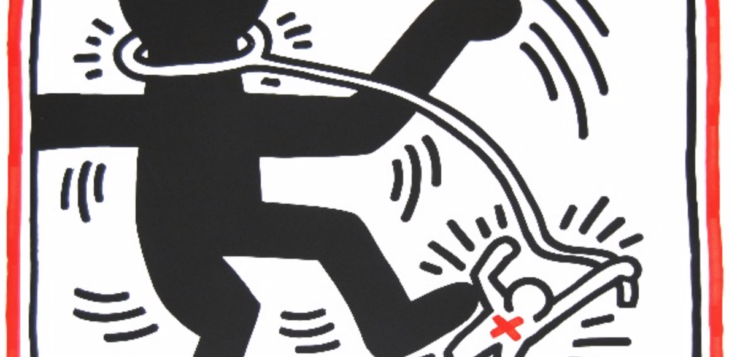 Keith Haring’s Line: Race and the Performance of Desire
Keith Haring’s Line: Race and the Performance of Desire
by Ricardo Montez
Duke University Press. 144 pages, $23.95
IN HIS JOURNALS, Keith Haring wrote openly about his attraction to black men, claiming to find in nonwhite bodies “a soul more akin to his than that of white people.” One of the strengths of Munoz’ book is that he both acknowledges and problematizes what seems to me a racist fantasy masquerading as deep empathy. This phenomenon was already described in Arnoldo Cruz-Malave’s Queer Latino Testimonio: Keith Haring and Juanito Extravaganza, which describes the complex relationship of the artist to the street kid Juan Rivera, told in ways that make one wonder about Haring’s understanding of the men he coveted.
Keith Haring’s Line is neither a biography nor a general assessment of Haring’s work as an artist. Rather, it is a queer musing upon the intersections of sex and race in Haring’s work, drawing heavily upon the influence of Roland Barthes’ Mythologies and Jose Esteban Munoz’ Cruising Utopia. Montez writes with authority about photography, art, and queer theory, but the passion of this book lies in its interrogation of sex and race.

None of this is to suggest that Montez does not have a clear appreciation for Haring’s strength as an artist.
In some ways this book is as much an insight into Ricardo Montez as it is into Keith Haring. This is clearest in the final chapter, where he fixes upon photographs of Haring and his then lover Juan Dubose at a beach in Rio, and writes: “These fucking beautiful boys drive me crazy.” While Montez employs a heavily academic language, he does not use the obscurity of queer theory to distance himself from his subject. Commenting on Haring’s hookup in a subway toilet with the poet John Giorno, he writes: “My story here cannot be verified according to the record, but I write about a fantasy I too share.” That strikes me as very queer comment.
Dennis Altman is a professorial fellow in human security at La Trobe University in Australia.






